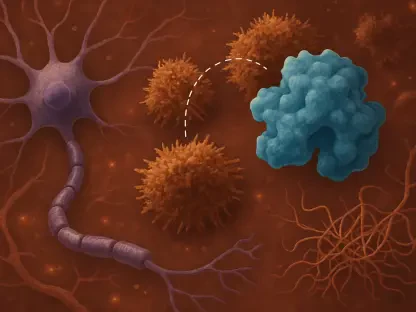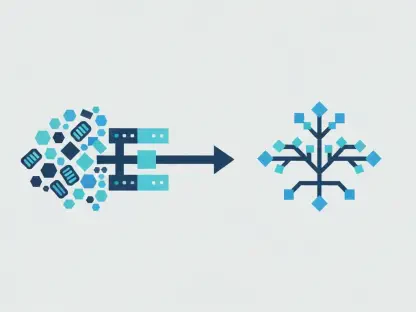In a landmark study that redefines the landscape of cancer treatment, TAF1 has emerged as a crucial factor in regulating hematopoiesis—the process of blood cell formation often disrupted in cancer. This discovery by the pioneering team at the Sylvester Comprehensive Cancer Center, spearheaded by medical luminaries like Stephen D. Nimer, M.D., illuminates TAF1 as an essential molecule in gene regulation. The study posits new avenues for therapies that potentially reshape prevailing cancer treatment paradigms. Addressing these innovative trends, this analysis covers the expanding understanding of TAF1, expert insights on its prospective impact, and projections for future therapeutic implications.
TAF1: A New Frontier in Cancer Research
Current Understanding and Growth Trends
The current exploration into TAF1 signals a burgeoning field within cancer research, with robust growth trends indicating significant scientific investment and clinical interest. Present data showcases how TAF1’s unique functionality in cancer treatment is drawing attention from researchers worldwide. Studies highlight TAF1’s interaction with oncogenic proteins, offering promising avenues for novel cancer therapies. The focus rests on understanding the intricate involvement of TAF1 in gene regulation, which challenges long-standing scientific models.
Research reports underscore a growing adoption of TAF1-based explorations. As the field evolves, comprehensive data indicates an uptick in studies and funding directed at elucidating TAF1’s mechanism, particularly its role in differentiating hematopoietic stem cells (HSCs) without impairing self-renewal capabilities. The interest in such targeted research accentuates TAF1’s potential in modernizing treatment approaches, echoing its anticipated relevance in cancer therapy landscapes.
Real-World Applications and Case Studies
Real-world applications of TAF1 are garnering attention, with concrete evidence of its profound role in cancer pathways. The interactions of TAF1 with AML1-ETO and other oncogenic proteins exemplify its influential presence in activating cancer-conducive genes. Detailed case studies from research institutions demonstrate TAF1’s pivotal role, underscoring its potential to unveil groundbreaking therapeutic strategies.
The engagement of research teams in exploring TAF1’s transformative potential reflects its compelling application in ongoing cancer treatment trials. These case studies, alongside pioneering inquiries into TAF1-targeting agents, offer clear validations of its existing and potential applications. Such examples underscore how TAF1 research continues to redefine cancer biology, setting a precedent for therapeutic innovations.
Expert Insights on TAF1’s Impact
Expert opinions resonate with favorable perspectives on TAF1’s significance in cancer therapy. Esteemed figures such as Stephen D. Nimer, M.D., and Ramin Shiekhattar, Ph.D., emphasize TAF1’s versatile role in regulating gene expression. Their insights reflect on the promising yet challenging terrain of TAF1 research, highlighting both the intricacies and feasible breakthroughs in treatment strategies.
Experts address the multifaceted challenges in researching TAF1, recognizing the hurdles in developing effective TAF1-targeting agents. Nonetheless, these professionals offer a view into TAF1’s substantial impact, suggesting its transformational potential within cancer treatment paradigms. The growing consensus among thought leaders accentuates TAF1 as a cornerstone in developing more precise and personalized cancer therapies.
Future Implications of TAF1 in Cancer Therapy
TAF1’s exploration heralds promising developments in cancer therapy, holding potential for innovative treatment solutions. The identification of TAF1 inhibitors as prime candidates for targeted therapy outlines an exciting frontier striving to maintain healthy hematopoiesis while effectively eradicating cancer cells.
The broader implications of TAF1 extend across different cancer types, with potential research addressing TAF1’s role in other stem cell-related diseases. The challenges in advancing TAF1-targeting agents pose considerations for researchers as they navigate these complex biological pathways aimed at capitalizing on TAF1’s therapeutic promise.
Conclusion and Future Directions
By shedding light on the vital role of TAF1 in cancer treatment, the study paves the way for future innovations in targeted therapies. Continued research on TAF1 remains pivotal, promising advancements that could redefine cancer treatment paradigms. Stakeholders are encouraged to persist in exploring TAF1’s functionality, leveraging insights for enhancing therapeutic strategies. The ongoing commitment to TAF1 research holds the potential to unlock significant breakthroughs, illustrating its profound influence on the future of cancer therapy.









